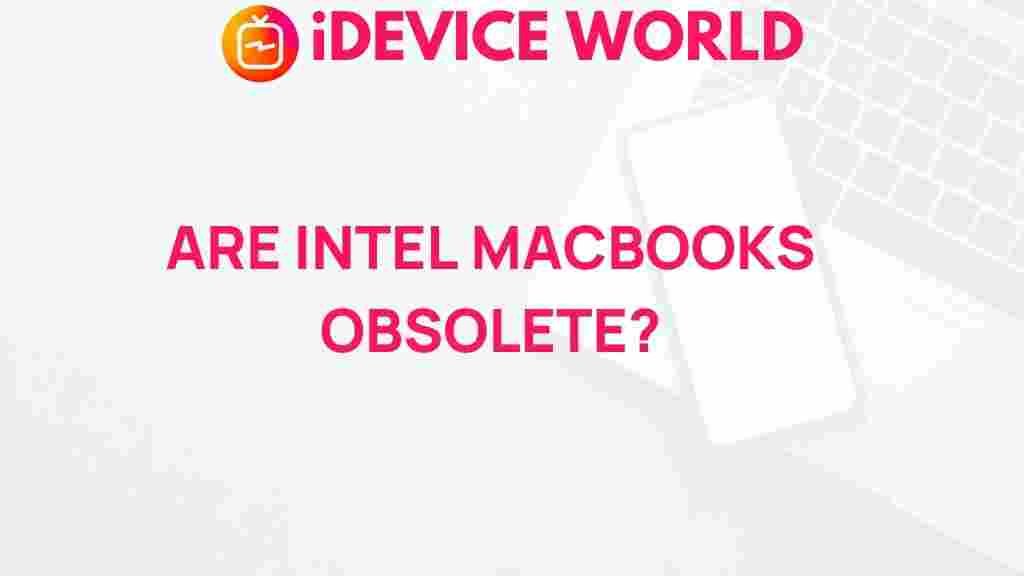The Mystery Behind the Future of Intel MacBooks
The transition from Intel to Apple’s own silicon in MacBooks has sparked both excitement and uncertainty among users and tech enthusiasts alike. With Apple’s M1 and M2 chips dominating discussions, the role of Intel in the MacBook ecosystem is evolving. This article will explore the implications of this shift, the future of Intel MacBooks, and what users can expect moving forward.
The Current Landscape of Intel MacBooks
Intel processors have been a cornerstone of MacBooks for years, providing robust performance and compatibility. However, Apple’s decision to transition to its custom silicon has raised questions about the future of Intel MacBooks. Here are some key points to consider:
- Performance: Intel MacBooks have traditionally offered powerful performance suitable for professional applications.
- Compatibility: Many software applications are optimized for Intel architecture, which remains a consideration for some users.
- Legacy Support: Users who rely on specific Intel-based applications may find themselves needing to hold onto their current devices longer.
The Transition to Apple Silicon
Apple’s transition to its own chips marks a significant change in its hardware strategy. The M1 chip, introduced in late 2020, was a game-changer, offering:
- Increased performance and efficiency
- Enhanced graphics capabilities
- Improved battery life
Despite these advantages, many users still have a soft spot for their Intel MacBooks, appreciating the familiar interface and performance benchmarks they have come to trust.
What Lies Ahead for Intel MacBooks?
As Apple continues to innovate with its silicon, what does the future hold for Intel MacBooks? Here are some scenarios:
- Continued Support: Apple may continue to provide software updates and support for Intel-based devices for a few more years.
- Price Reductions: As newer models are released, prices for Intel MacBooks may decrease, making them more accessible.
- Refurbished Options: Users may find high-quality refurbished Intel MacBooks at lower prices as newer models dominate the market.
Step-by-Step Guide: Transitioning from Intel MacBooks
If you’re considering a transition from an Intel MacBook to an Apple silicon model, follow this step-by-step guide to ensure a smooth process:
1. Assess Your Needs
Before making a decision, evaluate your computing needs:
- What applications do you use most frequently?
- Do these applications have M1 or M2 compatibility?
- Are you reliant on any legacy software that may not run on Apple silicon?
2. Backup Your Data
Always backup your data before transitioning:
- Use Time Machine to create a complete backup of your Intel MacBook.
- Consider cloud storage solutions for additional safety.
3. Explore Migration Options
When you get your new Apple silicon MacBook, use the Migration Assistant to transfer your data seamlessly. This tool allows you to:
- Transfer applications, files, and settings from your Intel MacBook.
- Ensure that all your important data is preserved.
4. Familiarize Yourself with New Features
Apple silicon MacBooks come with unique features. Take the time to explore:
- The new Control Center for quick settings adjustments.
- Performance enhancements, such as faster app launches and improved battery life.
Troubleshooting Tips for Intel MacBooks
If you’re experiencing issues with your Intel MacBook, consider the following troubleshooting tips:
1. Check for Software Updates
Keeping your macOS up to date can resolve many issues:
- Go to System Preferences > Software Update.
- Install any available updates to improve performance and security.
2. Reset NVRAM
If your MacBook is acting strangely, resetting the NVRAM can help:
- Shut down your MacBook.
- Turn it on and immediately hold Option + Command + P + R until you hear the startup sound twice.
3. Run Disk Utility
Use Disk Utility to check for disk errors:
- Open Disk Utility from the Applications folder.
- Select your disk and click on First Aid to repair any issues.
The Role of Intel in the Future of Computing
Even as Apple transitions to its own chips, Intel remains a significant player in the computing industry. Here are some ways Intel continues to impact the future:
- Innovation: Intel is continuously innovating its processor technology, which can influence various computing platforms.
- Compatibility: Many enterprises and users still rely on Intel-based systems, ensuring that Intel’s presence in the market remains strong.
- Diverse Applications: From servers to high-performance computing, Intel processors are vital in multiple sectors.
Conclusion
The future of Intel MacBooks is shrouded in uncertainty as Apple pushes forward with its silicon strategy. While the advantages of Apple’s M1 and M2 chips are undeniable, Intel MacBooks still hold value for many users. Whether you decide to stick with your Intel MacBook or transition to an Apple silicon model, understanding the landscape and your needs is crucial.
As we look ahead, it is clear that both Intel and Apple will continue to shape the future of personal computing in their ways. For more information on transitioning to Apple silicon, check out this Apple resource that provides insights on the benefits and features of the latest MacBook models. Additionally, you can explore our internal resources on optimizing your MacBook performance for tips that apply to both Intel and Apple silicon devices.
This article is in the category News and created by iDeciveWorld Team
